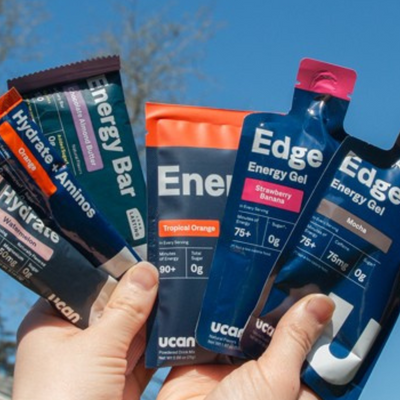"Better endurance" can mean many things—whether it's climbing stairs without feeling winded, running your first marathon, or anything in between. You might be aiming to set a 10k personal record or simply keep up with your kids on the playground. This guide will help you build endurance as a new athlete, focusing on the initial steps in your fitness journey and creating a solid plan to prevent injury.
In the second half, we'll cover key metrics to track as you build endurance, including heart rate, intervals, nutrition, and recovery. By the end, you'll have a quick guide to start your journey towards improved endurance.
Table of Contents
- What is Endurance?
- What is Stamina?
- Endurance vs. Stamina
- How to Increase Endurance and Stamina
- Find Your Target Heart Rate
- Increase Your Training Gradually
- Decrease Recovery Time Between Sets
- Fuel Properly for Every Workout
- Rest and Recovery Properly
- Beginner’s Guide to Increasing Physical Endurance
What is Endurance?
Endurance is the ability of a muscle or muscle group to contract for a specific period. There are two types of endurance:
- Muscular Endurance: The ability of a muscle to contract repeatedly over time, not necessarily at maximum capacity.
- Cardiovascular Endurance: The heart's ability to beat at an elevated rate for a prolonged period during intense exercise.
What is Stamina?
Stamina refers to the ability of a muscle or muscle group to contract near its maximum capacity for a specific duration. While similar to endurance, the key difference is that stamina focuses on maximum capacity contraction, while endurance is about sustaining activity over time.
Endurance vs. Stamina
For new endurance athletes, training should prioritize improving endurance over stamina. Stamina training is crucial for elite athletes or those preparing for specific events. Beginners should focus on sessions that enhance muscular and cardiovascular endurance, emphasizing pacing to maintain performance over extended periods.
How to Increase Endurance and Stamina
Find Your Target Heart Rate
Pacing is crucial for endurance training, and heart rate is a reliable metric. Knowing your heart rate training zones will help you target the optimal heart rate for endurance training, maximizing fitness gains while avoiding injury and burnout.
Increase Your Training Gradually
Gradually increasing your training volume, known as progressive overload, is essential. Track your weekly training and aim to increase your volume by up to 10% per week to avoid plateauing and reduce the risk of injury.
Decrease Recovery Time Between Sets
To improve endurance and stamina, focus on reducing recovery time between exercises. Shorten rest periods to 10-30 seconds to keep your heart rate elevated. Here’s an example of a circuit training workout with 20-second rest periods:
- 10 burpees
- 10 squats
- 10 lunges
- 10 push-ups
- 10 sit-ups
Fuel Properly for Every Workout
Avoid fasted training as a new athlete. Fuel your workouts with carbohydrate-rich meals about three hours before training, and refuel post-workout with a mix of carbohydrates and protein. Products like UCAN's energy gels and energy bars are excellent for sustained energy without blood sugar spikes.
Rest and Recovery Properly
Rest and recovery are when your body rebuilds and strengthens after workouts. Avoid overtraining by sticking to a structured program with 2-3 hard sessions per week, gradually adding low-intensity sessions as you gain experience.
In Summary
Starting endurance training as a new athlete can be daunting. Focus on 2-3 weekly sessions that combine strength and cardio exercises. Shorten rest periods, maintain consistency, and prioritize rest and recovery. Gradually increase training intensity and pay attention to nutrition. With time, your endurance and stamina will improve significantly.








